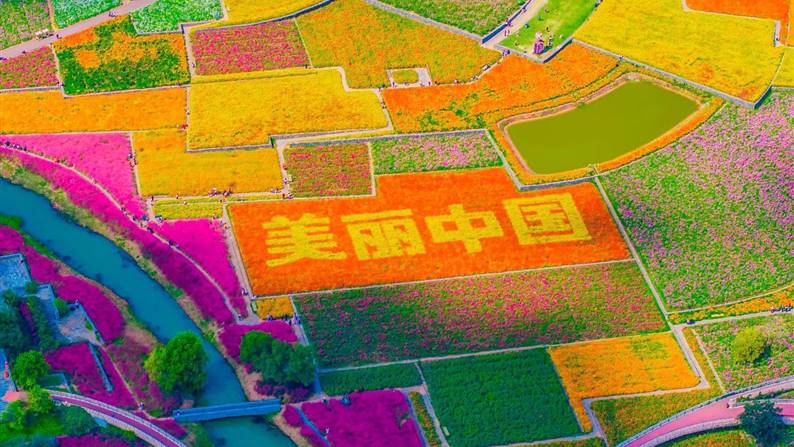

The world's most popular chocolate brand, KitKat, on April 21, 2021, pledged to be carbon neutral by 2025. As part of its carbon neutrality initiative, KitKat is committed to reducing carbon emissions by more than 50% in raw material sourcing, product manufacturing and its distribution.
Most of KitKat's carbon emissions come from the production of its product ingredients, such as cocoa and milk. KitKat will minimize carbon emissions through measures such as restoring forests and supporting the transition to regenerative agriculture.
For carbon emissions that cannot be eliminated, KitKat will neutralize it by investing in high-quality carbon offset projects based on natural climate solutions.
KitKat is working with The Carbon Trust, a global climate change and sustainability consultancy, to assess KitKat's current carbon footprint. The assessment is expected to be completed later in 2021.
Protect and Restore Forests
Deforestation is one of the leading causes of carbon emissions in global agricultural supply chains. Over the past decade, Nestlé has used a variety of tools, including certification, supply chain grooming and satellite imagery, to achieve its "zero deforestation" commitment.
In addition, Nestlé is also focusing on forest protection and restoration. Nestlé, for example, released one in 2019 to help protect and restore forests in its cocoa supply chain. Earlier this month, Nestlé and other agencies launched the Rimba Collective program. The program aims to support the conservation and restoration of over 500,000 hectares of tropical forest in Southeast Asia. This region is one of Nestlé's raw material procurement locations.
Expanding Regenerative Agriculture Practices
KitKat will further expand its partnership with dairy farmers as well as cocoa, palm oil, sugar and grain farmers to implement regenerative practices. Tillage practices such as reduced integrated inputs, better soil management and afforestation can all help remove carbon dioxide from the atmosphere, enhance biodiversity and increase farm productivity. To that end, KitKat will help farmers in its cocoa sourcing land plant 5 million shade trees.
Accelerating the Renewable Electricity Transition
KitKat is working to reduce the
environmental footprint of its factories. Since 2000, KitKat has successfully
reduced the energy required per ton of product production by more than 40%.
The Nestlé KitKat production site is already partially powered by renewable electricity. For example, production sites in the Middle East and Brazil use solar power. Nestlé will continue to find new ways to end its reliance on fossil fuels so that all KitKat factories run on 100% renewable electricity by the end of 2025.
Ten years of forging ahead, forging
ahead
KitKat's history of improving supply chain sustainability goes back more than a decade. Nestle launched the "Nestle Cocoa Program" in 2009, and by 2016, 100% of the cocoa used in KitKat was purchased through the program. Through the program, Nestle has planted more than 15 million cocoa trees and invested 300 million Swiss francs in sustainable development of the cocoa industry.
KitKat's new carbon-neutral commitment takes Nestle's
ongoing efforts to reduce its environmental footprint to new heights. Nestle
has pledged to achieve net zero carbon emissions across the value chain by
2050.
全球广受欢迎的巧克力品牌奇巧(KitKat)于2021年4月21日承诺到2025年实现碳中和。作为碳中和计划的一部分,KitKat致力于在原材料采购、产品制造及其分销方面减少50%以上的碳排放。
KitKat的大多数碳排放来自其产品原料(例如可可和牛奶)的生产。KitKat将通过诸如恢复森林和支持向再生农业转型等措施来尽可能减少碳排放。
对于无法消除的碳排放,KitKat将通过投资基于自然气候解决方案的高品质碳抵消项目进行中和。
KitKat正与全球气候变化与可持续发展咨询机构英国碳信托基金(The Carbon Trust)开展合作,评估KitKat当前的碳足迹。该评估工作预计将于2021年晚些时候完成。
保护和恢复森林
森林滥伐是全球农业供应链中碳排放的主要原因之一。在过去十年,雀巢采用了多种工具,包括认证、供应链梳理和卫星图像来实现“零森林滥伐”承诺。
此外,雀巢还专注于森林保护和恢复。例如,雀巢在2019年发布了一项,以帮助保护和恢复其可可供应链中的森林。本月初,雀巢与其它机构共同启动了Rimba Collective计划。该计划旨在支持保护和恢复东南亚地区超500,000公顷的热带森林。该地域正是雀巢的原料采购地之一。
拓展再生农业实践
KitKat将进一步拓展与奶农以及可可、棕榈油、糖和谷物农户的合作来实施再生实践。减少综合性投入、更好地管理土壤和植树造林等耕作方法都可以帮助移除大气中的二氧化碳、增强生物多样性并提高农场生产效率。为此,KitKat将帮助其可可采购地的农户种植500万棵荫蔽树。
加速可再生电力转型
KitKat正在努力减少其工厂的环境足迹。自2000年以来,KitKat已成功将每吨产品生产所需的能源降低了40%以上。
雀巢KitKat生产基地已部分采用可再生电力。例如,中东和巴西的生产基地就使用了太阳能电力。雀巢将继续寻找新方法来终结其对化石燃料的依赖,从而在2025年底前实现所有KitKat工厂100%使用可再生电力。
十载奋进,砥砺前行
KitKat改善供应链可持续发展的历史可追溯到十余年前。雀巢于2009年启动了“雀巢可可计划”,到2016年已实现KitKat所用可可100%通过该计划采购。通过该计划,雀巢已种植了超1500万棵可可树,并为可可产业的可持续发展投资了3亿瑞士法郎。

2025“美丽中国•绿色空间使用者” 典型案例征集启动!
08-13 · 来源:生态环境部宣传教育中心 · 作者:生态环境部宣传教育中心

蚂蚁集团:基于绿色计算技术的高质量、低碳发展实践 | 《2024“美丽中国,我是行动者”企业气候行动案例集》案例展示(九)
03-12 · 来源:微言环保 · 作者:微言环保

生态环境部有关负责人就《关于深入开展“美丽中国,我是行动者”系列活动工作方案》答记者问有关负责人就《关于深入开展“美丽中国,我是行动者”系列活动工作方案》答记者问
2024-05-30 · 来源:生态环境部 · 作者:生态环境部